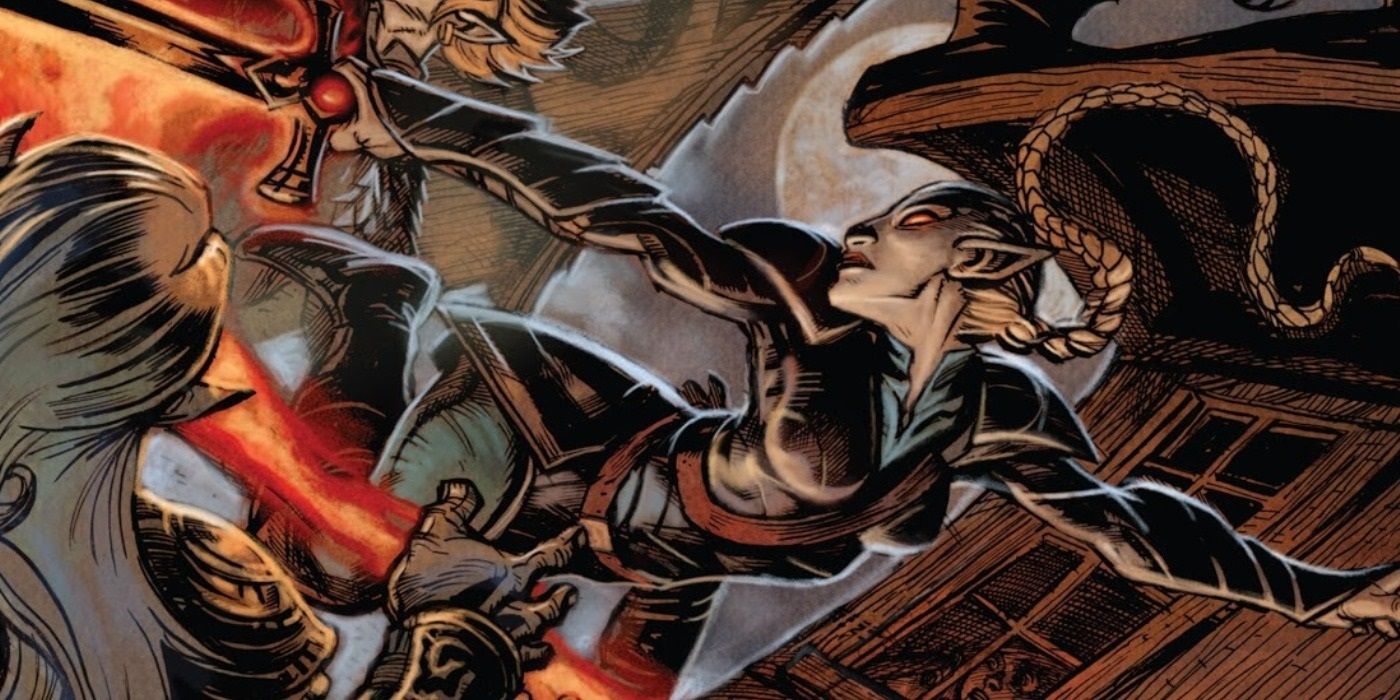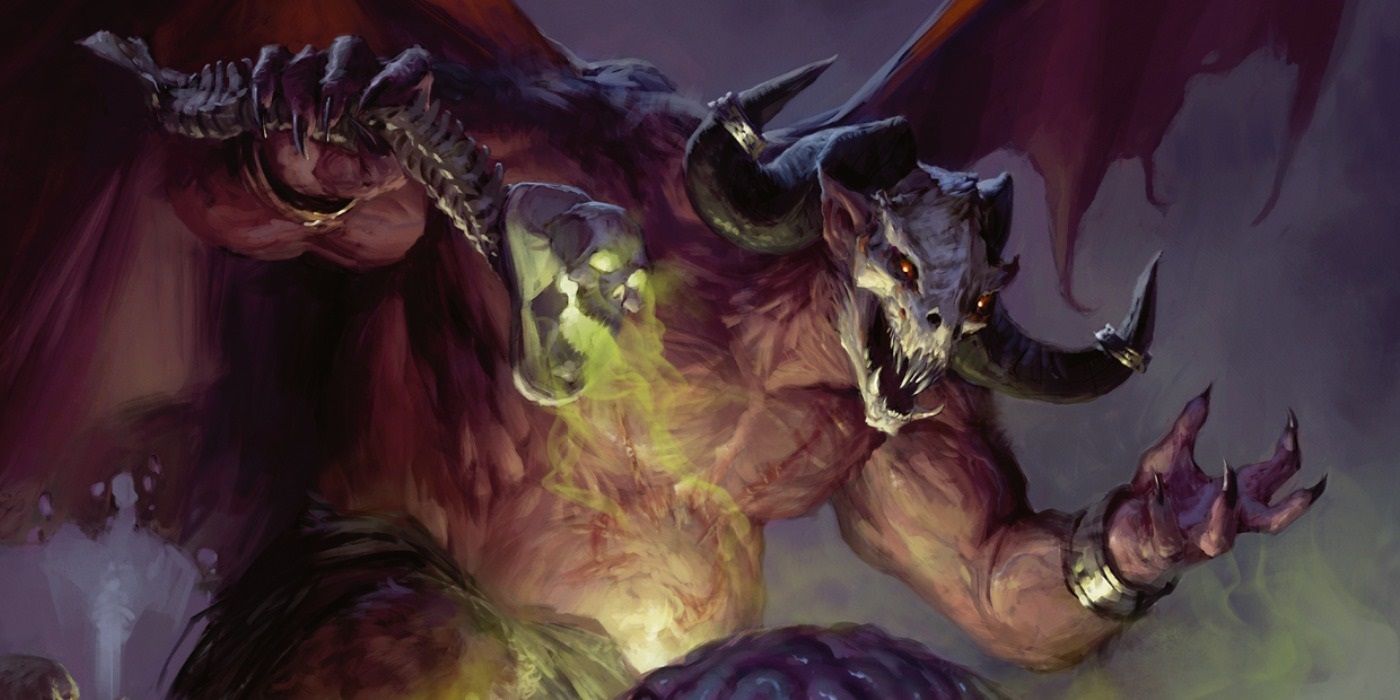The 8th-level spells in Dungeons & Dragons are among the most powerful in the game, at least in the current edition, as they are the penultimate expression of a caster's power. Once a caster hits 9th-level spells, then they have reached the ultimate level of magic. Not all of the 8th-level spells jumped to 5e D&D, as some no longer fit the format of the game, while others could be being saved for a future rulebook.
In D&D 5e, there are a number of powerful 8th-level spells that spellcasters can use. These include the clone spell, which lets casters cheat death by creating a backup copy of their body, which they can enter upon the death of their current body. The antimagic field spell is the ultimate anti-spellcaster weapon, as it peels away the ability to use magic within a 10ft area, while the holy aura spell can blind any fiends or undead that dare attack the caster. The most fearsome 8th level spell in D&D is feeblemind, as it can reduce the target's Intelligence and Charisma stats to 1, stealing their very personality in the process.
The Player's Handbook in each edition has a massive section dedicated to spells. These include the 8th-level spells, despite how few players ever get the chance to use them. There were some 8th-level spells in the old editions of D&D that never made the cut for 5e and only exist in the lore of the multiverse. The upcoming D&D 5.5 version of the Player's Handbook could bring them back, but they currently do not exist in the game.
The Offensive 8th-Level Spells Cut From 5E D&D
The sending spell is present in 5e, but it had an upgraded version in AD&D, called demand, which combined its long-range communication with a suggestion spell, possibly forcing the recipient to follow a command. The greater shout spell in 3e not only dealt a ton of sonic damage (one of the damage types that wasn't often resisted by enemies), but it also had a chance of deafening enemies, possibly causing spellcasters to mess up their spells. The mass charm spell in AD&D acts like charm person or charm monster, but it can affect foes within a 30ft cube. The mass inflict critical wounds spell in 3e works like the regular version of the spell, but it can affect a number of targets equal to caster level. Otiluke's telekinetic sphere is similar to the Otiluke's resilient sphere spell, as it traps an enemy within a ball of magical energy. The telekinetic variant makes the target weightless, which means they cannot influence the sphere's movement.
The polymorph any object spell allows the caster to gain the power of true alchemy, as they can change one substance into another, which includes turning an enemy into a pillar of salt. The power word blind spell can make up to 100 hit points worth of creatures go blind without a saving throw and the effect is permanent. D&D 3e's ice mages and spellcasters had an amazing offensive spell in polar ray, which could deal up to 25d6 worth of cold damage to a target. The sink spell in AD&D has one of the most horrifying effects in the game, as it slowly forces a person into the ground and traps them in a state of suspended animation, unable to escape until they are freed. The scintillating pattern spell is a much stronger variant of color spray, with creatures possibly affected by the confusion spell if they fail their saving throw. The greater shadow evocation spell in 3e created quasi-real illusions made out of shadow magic, that could potentially harm opponents.
The Defensive 8th-Level Spells Cut From 5E D&D
The power of chaos can be just as potent as that of good and evil, and the cloak of chaos spell shows just how terrifying it can be. The recipient of the cloak of chaos spell +4 AC, spell resistance 25 against lawful spells, protection from mind control effects, and anyone who attacks the bearer must pass a saving throw or be confused for one round. The high-level spellcasters in D&D 3e had to compete with the dimensional lock spell, which was a protective barrier that prevented most forms of astral/ethereal movement, including teleportation. The 3e spellcasters who wanted the power of a golem could cast iron body to grant them immunity to various forms of damage, a +6 to Strength, and allowing their unarmed attacks to deal damage. The iron body spell also had drawbacks, as it came with a -6 Dexterity penalty, a 50% spell failure chance, and it increases their weight by a factor of ten.
D&D 5e has one high-level divination spell, but 3e once had moment of prescience, which was one of the best in the game, as it granted a +25 AC bonus against an upcoming attack. AD&D and 3e both had the amazing permanency spell, which let the caster spend experience points to permanently gain the effects of a spell, such as detect magic. The protection from spells spell grants an incredible +8 saving throw against spells, but it only lasts ten minutes per level and costs 500 gp worth of diamonds to cast. The repel metal and stone spell is interesting, as people clad in armor will be forced back by its effect, as will any stone or metal not attached to the ground. The screen spell is the ultimate anti-divination protection, as any attempt at scrying will instead see an image of the caster's choosing. Serten's spell immunity in AD&D granted total immunity from spells, but only of a certain level that scaled with the caster's level. The unholy aura spell from 3e was the same as cloak of chaos, except it affected good spells.
The Utility 8th-Level Spells Cut From 5E D&D
The D&D enchanters have access to binding in the older editions of the game. It's common in media to see wizards containing an extradimensional creature in a magic circle, which was the purpose of the binding spell in AD&D. The binding spell requires a 1000 gp diamond to cast, but it can bind someone for a year per caster level, and someone who is strong enough to cast 8th-level spells likely has many levels under their belt. It's rare for a plant monster to pose a major threat, but druids with the 3e control plant spell could bind the likes of ents to their will. The necromancers in 3e who hit high levels could use the create greater undead spell to build shadows, wraiths, spectres, and devourers with their magic.
The wizards who wanted to look really cool in AD&D could cast glassteel to make glass as hard as steel, but only the regular non-magical version of steel. The greater planar ally spell in 3e allowed players to conjure an outsider-type monster with 16 Hit Dice, allowing them to call a variety of powerful angels, demons, and devils to their side in battle. The prying eyes spell in 3e created floating magical eyes that followed the caster's bidding, while the greater prying eyes spell gave them the benefit of true seeing. The summon monster VIII/summon nature's ally VIII spells in 3e allowed the caster to summon creatures like a greater elemental, a blue slaad, or a vrock. The trap the soul spell in 3e allowed the caster to seal the soul of an enemy in a gem, which was originally planned for the new edition and was listed in early printings, but the D&D Player's Handbook cut the spell at the last minute, leading to confusion among Dungeons & Dragons players.




